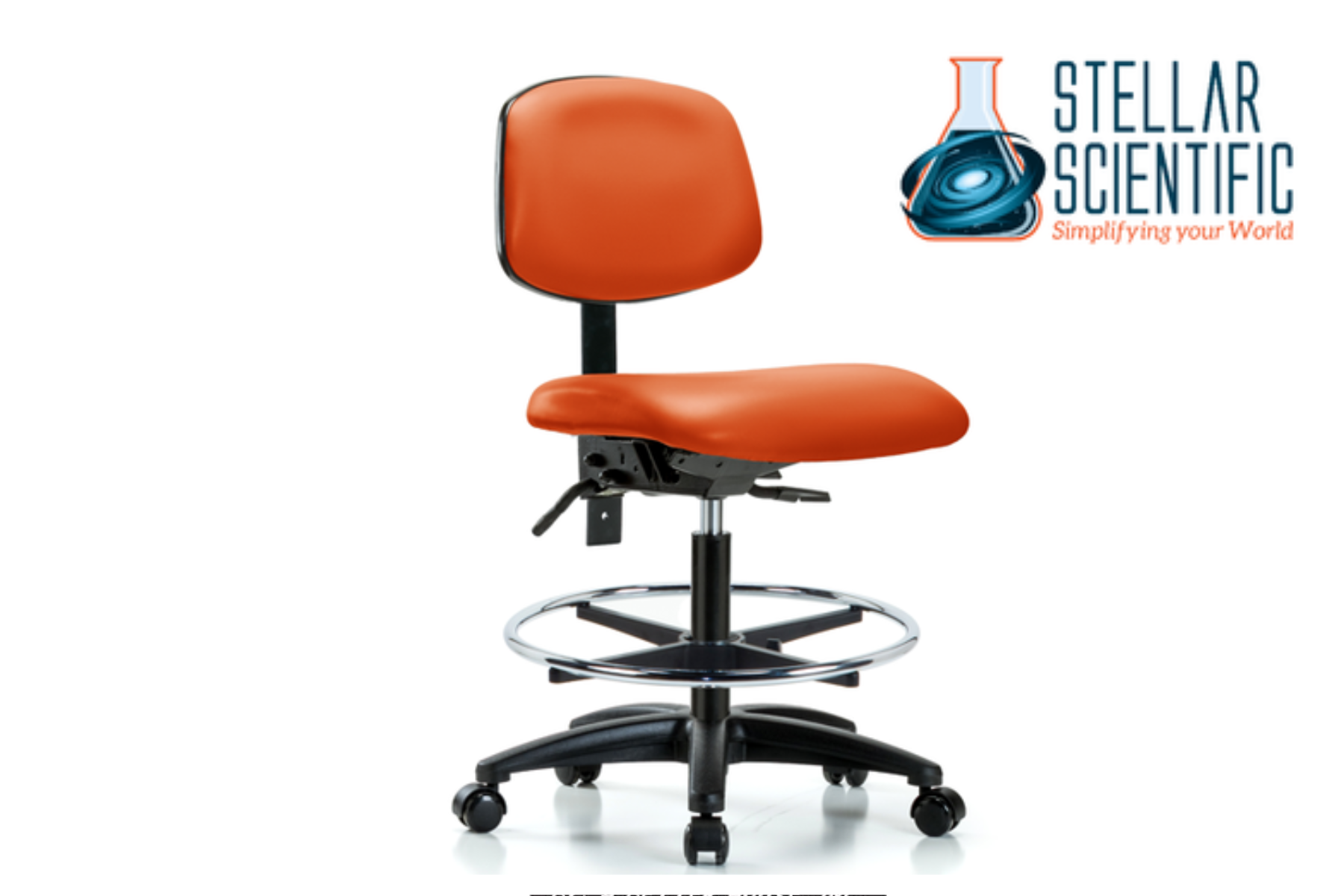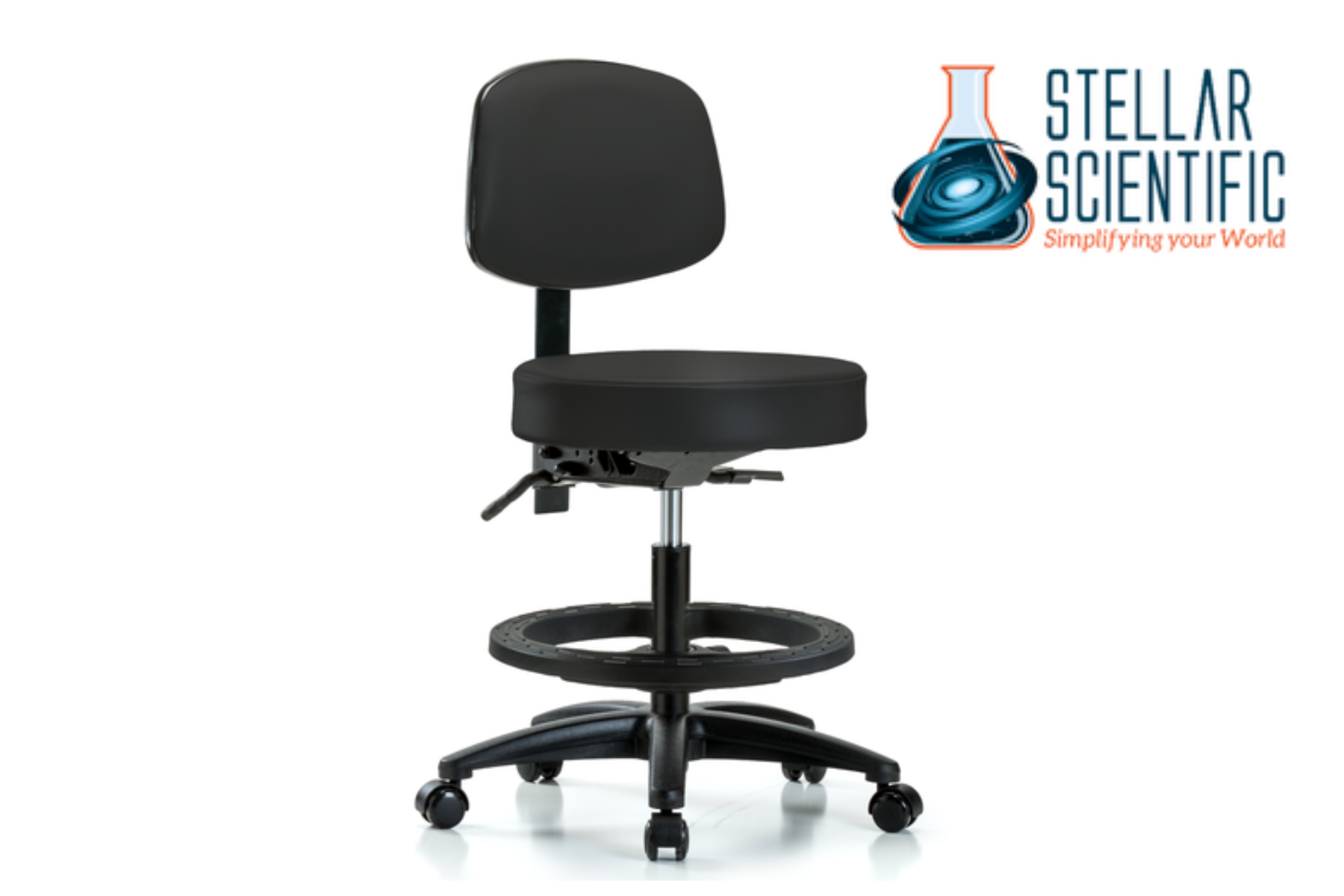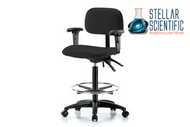Comfort Meets Science: The Importance of Laboratory Chairs in Enhancing Productivity and Safety
21st Jul 2025
In high-performance laboratory environments, the focus is often on advanced instruments, reliable reagents, and optimized workflows. However, one critical component is often overlooked: lab seating. Scientists, technicians, and students can spend hours at workstations conducting experiments, analyzing data, or preparing samples. Without proper ergonomic support, long-term discomfort and even chronic musculoskeletal issues can arise.
Lab seating isn’t just about comfort; it's about productivity, safety, and the ability to maintain focus during long hours of intricate work. The right chair or stool can improve posture, reduce fatigue, and support both the physical and mental demands of scientific research.

What Makes a Chair Lab-Ready?
Not all chairs are built for laboratory environments. While an ordinary office chair might seem sufficient, lab workspaces have unique requirements that demand specialized seating solutions. Laboratory chairs must be designed to withstand harsh conditions, provide mobility and adjustability, and meet cleanliness standards.
Key features that differentiate lab seating from standard office chairs include:
1. Chemical-Resistant Materials
Laboratory environments frequently expose furniture to harsh chemicals, cleaning agents, and biological materials. High-quality lab chairs are made from vinyl, polyurethane, or other resistant materials that are easy to clean and do not degrade when exposed to solvents or disinfectants.
2. Ergonomic Design
Scientific work often involves repetitive motions, fine motor tasks, or extended periods of sitting. Ergonomic lab seating includes lumbar support, adjustable backrests, seat height control, and foot rings (for stools) to encourage healthy posture and minimize physical strain.
3. Adjustability for Flexibility
No two lab workers are built the same, and a one-size-fits-all approach won’t suffice. The best lab seating options offer multiple points of adjustment height, seat tilt, armrests, and back support, so each user can tailor their chair to fit their specific needs and the demands of the task at hand.
4. Mobility and Stability
Smooth-rolling casters enable easy movement across lab floors, particularly in modular workspaces where technicians frequently move between stations. At the same time, chairs must offer stable bases to prevent tipping or slipping during precision work.
5. Cleanroom and ESD-Safe Options
Some labs, especially in electronics, pharmaceutical, or biotech manufacturing, require cleanroom-compatible or electrostatic discharge (ESD) safe seating. These specialized chairs reduce the risk of contamination or electrical interference, protecting both the work and the worker.
The Impact of Comfort on Lab Productivity
Comfortable, supportive seating does more than prevent backaches; it enhances focus, accuracy, and job satisfaction. When lab personnel can concentrate on the task at hand without the distraction of physical discomfort, their work becomes more efficient and less error-prone.
Studies have shown that ergonomically designed work environments lead to higher productivity and reduced absenteeism due to musculoskeletal disorders. Given that laboratory work often involves intricate procedures or lengthy observations, even small gains in comfort can translate into significant performance improvements.
Matching Seating to Lab Roles
Different types of lab work call for different seating solutions. Matching the chair to the specific role or task improves both comfort and functionality.
For Benchwork and Wet Labs
For scientists and technicians working at high lab benches, lab stools with foot rings and height adjustability are ideal. These stools allow for greater reach and ease of movement during pipetting, microscopy, or titration. Non-porous surfaces ensure easy decontamination after working with biological or chemical agents.
For Data Entry and Analysis
Technicians analyzing results or managing digital lab notebooks spend considerable time at computer workstations. In these cases, fully adjustable lab chairs with lumbar support and armrests are ideal to maintain posture during extended screen time.
For Cleanroom or Controlled Environments
Cleanroom-compliant seating is essential in sterile or particle-sensitive environments. These chairs are typically constructed from low-particulate-emitting materials and may include special casters or grounding mechanisms for ESD protection. Smooth finishes and minimal crevices allow for effective decontamination.
For Multi-User Labs
Shared workspaces benefit from quick-adjust seating that allows multiple users to change height and backrest position easily throughout the day. Chairs with simple adjustment levers and intuitive controls enhance efficiency in team environments.
Features to Look for in High-Quality Lab Chairs
When selecting lab seating, consider these critical features:
- Height Adjustability: Essential for aligning posture at different bench heights and accommodating various user statures.
- Back Support: A contoured backrest with lumbar support prevents slouching and back strain.
- Seat Cushioning: High-density foam or molded polyurethane provides durability and comfort without sagging over time.
- Footrests or Rings: For high stools, foot support helps maintain proper circulation and posture.
- Chemical Resistance: Choose materials that resist staining, corrosion, and damage from alcohols, acids, and cleaning agents.
- Easy-to-Clean Surfaces: Seamless construction and smooth surfaces allow for quick disinfection and maintenance.

Best Practices for Lab Seating Maintenance
Keeping your lab seating clean and functional extends its lifespan and supports lab hygiene protocols. Here are some best practices:
- Wipe down seats daily with a suitable disinfectant, especially after exposure to biological agents or chemicals.
- Inspect adjustment mechanisms regularly to ensure smooth operation and avoid mechanical failure.
- Replace worn or torn upholstery immediately to maintain chemical resistance and prevent contamination.
- Check caster wheels for debris that could hinder mobility or scratch sensitive flooring.
Investing in the Right Lab Seating Pays Off
Although science lab stools may seem like a small part of your overall setup, they have a measurable impact on day-to-day performance and long-term well-being. By investing in high-quality, lab-specific seating, institutions protect their personnel, optimize their productivity, and demonstrate a commitment to workplace ergonomics and safety.
In research and testing environments, precision is everything. The ability to focus without discomfort can be the difference between success and failure. Comfortable, reliable seating is not a luxury; it's a tool for better science.
About Stellar Scientific
At Stellar Scientific, we understand the unique demands of the laboratory environment. That’s why we offer a curated selection of lab seating solutions designed for performance, comfort, and compliance. From ergonomic lab stools and adjustable chairs to cleanroom and ESD-safe models, our seating options are built to support your team’s best work.
In addition to lab seating, we provide a comprehensive range of laboratory equipment, consumables, and accessories. Every product is selected for its quality, durability, and compatibility with the modern lab’s needs.

